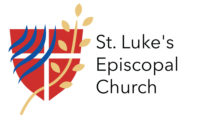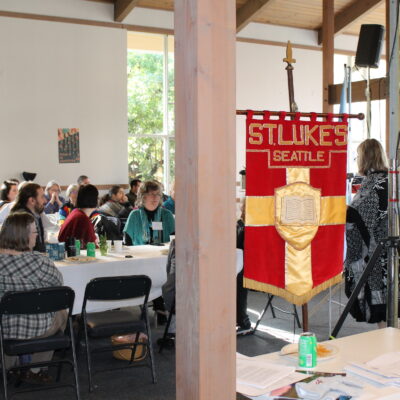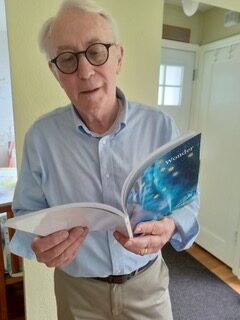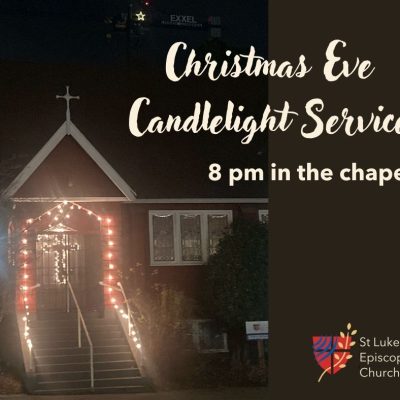In this season after Epiphany, according to weekly lectionary readings, Jesus has grown up, been baptized, and begun his ministry. Yet, in today’s gospel reading, here we are, back at the Temple with Mary, Joseph, and the Christ child. Not every year do we get to meet or reacquaint ourselves with Simeon and Anna, so this year is quite special in that regard. When I first read the texts for today, I knew immediately that we needed to hear from Simeon the faithful servant, and Anna, the prophet. And so, we join Simeon and Anna as they pull back the blanket, to gaze upon the face of Jesus—what better image to hold during this time before Lent. As Blaine reminded us a couple Sundays ago, it is in this time of winter rain and darkness that God’s light continues to emerge; the Messiah is revealed.
Luke’s gospel describes Simeon as one upon whom the Holy Spirit rested. He was guided by the Holy Spirit to go to the Temple on the day that Mary and Joseph brought the infant Jesus. Upon seeing the family, he knew that God had fulfilled the promise given, and says “Master, now you are dismissing your servant in peace, according to your word; for my eyes have seen your salvation…a light for revelation to the Gentiles and for glory to your people Israel.”
Simeon’s refrain is the third song of praise in the beginning of Luke’s gospel. The third Sunday of Advent we listened to Mary rejoicing in God’s work, her magnificat closing with, “[God] has helped his servant Israel…according to the promise he made to our ancestors..” Later, Zechariah, father of John the Baptist, proclaims “Blessed be the Lord God of Israel, for he has looked favorably on his people and redeemed them. He has raised up a mighty savior for us…” Where the first two come from the parents of Jesus and John, and focus on God’s redeeming work for Israel, Simeon’s prose acts as a kind of capstone after the boys are born, going further to extend God’s grace to include all others outside the Jewish faith: “my eyes have seen your salvation…a light for revelation to the Gentiles and for glory to your people Israel.”
Simeon embodies anticipation—faith-filled watching and waiting to see a promise come to complete fulfillment.
Luke then goes on to include the story of Anna, a widow, and a prophet. Unlike Simeon, we learn her family name and lineage, and that she resided at the temple. She is like the sparrow and the swallow from our psalm today, who make their nest beside the altar of God. I suspect that it is due to time spent at the Temple that she is able to recognize God’s salvation in the form of the infant Jesus. And so, upon meeting the family (and Simeon) she begins to praise God and “speak about the child to all who were looking for the redemption of Jerusalem.”
Anna offers to us an image of abiding patience, what’s also known in older language as ‘tarrying.’
What I love about the stories of Simeon and Anna, is how they introduce readers to (what I like to call) Luke’s Order of Perfectly Ordinary people, who have an extraordinary encounter with God in Christ. Characters like them are mirrored in the book of Acts (which is the companion volume) by disciples and Gentiles who respond to the message of Jesus and the kingdom of God, and who receive the gift of the Holy Spirit. Simeon and Anna offer illustrations of living a worship-filled life, as ordinary people—they are not priests or official temple servants. Yet, they demonstrate such familiar intimacy with the divine simply by their presence, as they recognize God (incarnate) in the flesh of a vulnerable infant, carried and cared for by a poor, young couple.
In Jesus’ time, worship happened exclusively at the temple. However, within a decade or so of the gospels composition, the Jerusalem temple was destroyed by the Roman army. The oppression of the Jewish community, combined with the quick adoption of Jesus’ message among Gentiles, in addition to the content of this new way of faith, converged in such a way that the very nature of worship was transformed. When God’s dwelling place—the temple—no longer exists, where does one go? At the same time, a new gospel emerged saying God became human to dwell on the earth. The question shifts from where does one go, to whom does one worship? The who of worship becomes God in Christ, and the where begins in the breaking of bread, in community. Yet, there remains a tension between the who and the where, particularly when it comes to how we are to understand creation, the world around us.
As today’s psalm and the opening hymn suggest, there is yet another way to encounter God, to be immersed in worship.
1 Creating God, your fingers trace, the bold designs of farthest space;
let sun and moon and stars and light, and what lies hidden praise your might.
2 Sustaining God, your hands uphold, earth’s mysteries known or yet untold;
let water’s fragile blend with air, enabling life, proclaim your care.
If we take seriously the incarnation, that God is Creator abiding in, with, and under all of creation, then all ground is holy ground, all waters are sanctified. Here in the PNW, we are blessed beyond belief with evergreen forests, clear running rivers, sea teeming with life and mountains that might as well be gateways to the heavens. With this absurdity of riches, there are many who seek the canopy of trees and stars as their temple for worship (the inverse of a desert experience, you could say). There are times when it seems as though we can only experience the divine when we retreat entirely from the noise of urban life. (This is not that sermon.)
The greatest challenge, when it comes to worship, is maintaining a dynamic tension between who (the Triune God of all creation) and where (in communion with one another, in communion with the rest of creation). The ground outside where trash sometimes collects may not seem holy, but it is. The back stairwell to the undercroft is far from pristine, but God dwells here, in this place, because people gather in the name of Jesus, to worship, to care for one another, to feed, nourish, and bring healing by the power of the Spirit. (Sometimes we do need to retreat, but not because God has drifted away.)
Worship is one of those terms that we think we know what it means, but defining it can be rather difficult. We come together to worship each week, meaning it is this time-space of (now) when we sing, pray, pass the peace, and take in Jesus himself in the bread and the wine. So, worship is what we ourselves ‘do.’ At the same time, worship is an an encounter with the (w)holy Other; it is something we enter into, like walking into someone else’s banquet. As both activity and encounter, it is our primary theology—meaning that we are no longer simply talking about God, but rather are communicating (with) Godself through song, prayer, gesture. Worship is our participation in the life of Godself, together and individually. And it doesn’t end when service ends. We are sent out in anticipation, waiting to encounter God in the world around us.
Christian tradition holds a tension of distance and intimacy—transcendence and immanence. That tension extends through worship. Prayers to a seemingly distant God culminate in consuming Jesus in bread and wine. In the various Eucharistic prayers (Greek for thanksgiving) that Canon Britt uses from season to season, week to week, we can hear how the language navigates that dynamic tension of God near and far.
In Simeon and Anna we see a foreshadowing of radical nearness (a new way of God communicating Godself). The Holy Spirit rests on Simeon as he expectantly waits for God’s Messiah; Anna’s abiding near the altar of God brings recognition when she sees the family—Anticipation and Patience are the postures of worship.
In the Vineyard church, where I spent some time, we have some incredible stories of what can happen when you simply pray, ‘Come, Holy Spirit,’ with hands outstretched. Similar stories reside here, too, from the years when Dennis Bennett was Rector, and beyond: healing, inexplicable joy amidst anxiety, specific words of encouragement, and so much more. We need those stories. We need new stories. We need to encounter God in surprising ways, to see fleshy vulnerability as a beautiful part of creation. And we need to give ourselves permission to simply be ordinary.
St. Luke’s has its own order of perfectly ordinary people who encounter God, and the invitation is open to join or simply inquire. Each week, during communion, there are folks who stand by the icon and candles, ready to pray with anyone who would like to do so. Today, when you take the bread and the wine, I want to encourage you to ask the Holy Spirit for a word, a phrase, an image, something that is particular for you. Hold onto that and, if you feel so moved, ask for others to pray with you. No lengthy explanations required, just patience and anticipation.
This Sunday is about worship. Worship refines us. Worship attunes us to God and our fellow creatures; to all of creation. Worship is our vocation, our calling, as followers of the Jesus way and readers of the Hebrew-Christian scriptures. Worship is not sitting on a cloud, strumming a little harp. Nor does it entail offering uncritical allegiance to someone else’s conception of God. Worship is as simple and difficult as presenting ourselves to Creator God (who is Love), just as we would approach an infant






